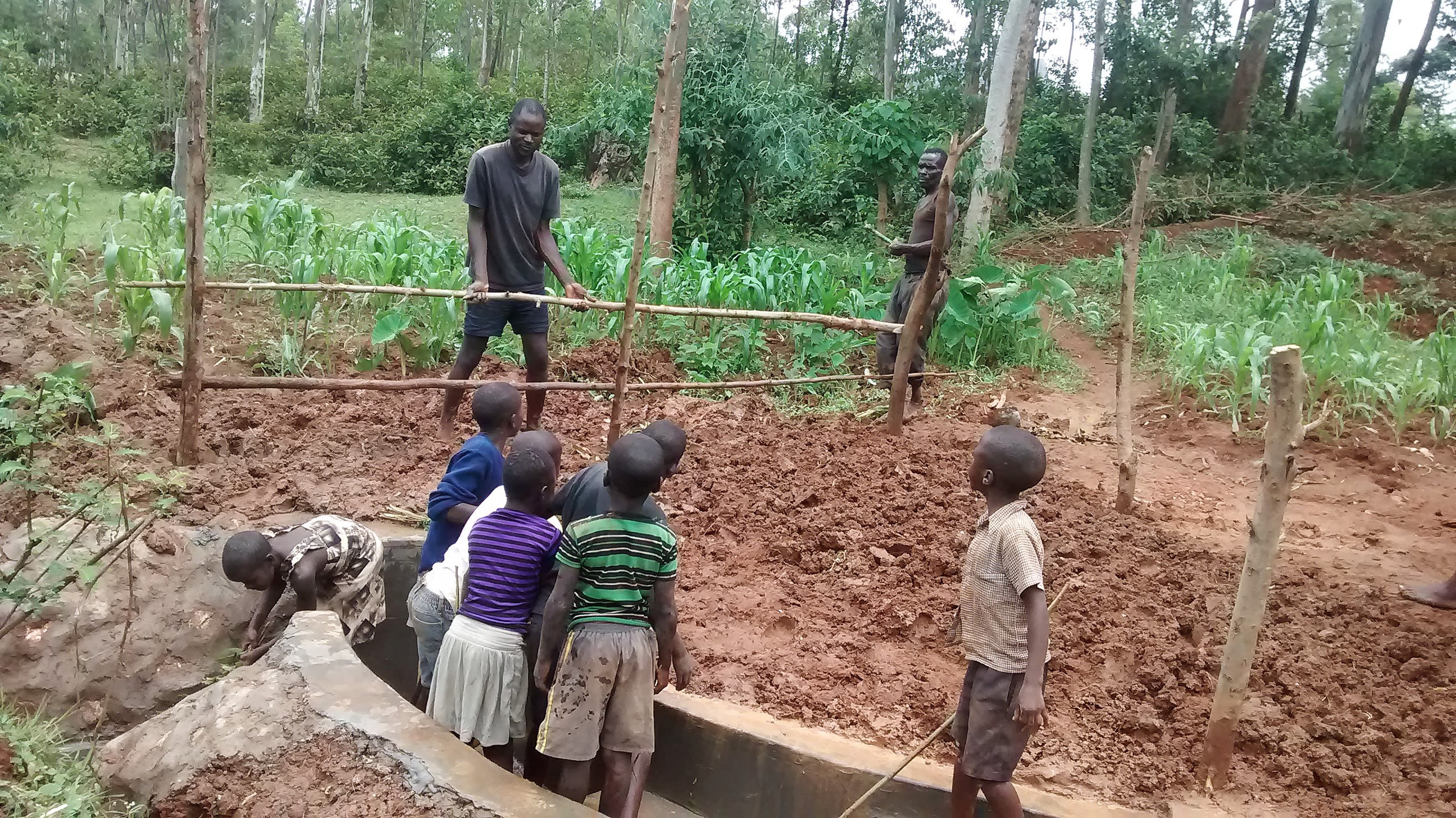This project is a part of our shared program with Western Water and Sanitation Forum (WEWASAFO). Our team is pleased to directly share the below report (edited for clarity, as needed).
Welcome to the Community
Mr. Christopher Omasaba and his family own the land that "Christopher Omasaba Spring" runs through. This family leads a life that can depict what a normal day in Ebuhando Community looks like for most. Every morning, children wake up to do dishes before they leave for school, while the elderly like Mrs. and Mrs. Omasaba sweep their compound with thick banana tree stalks. Christopher’s daughter, Miss Christine Sayo, will start her day thinking how to better her tailoring school to attract more clients.
The rest of the family attends to the needs of domesticated animals such as poultry and cows before leaving to work on their farm.
Besides bananas, there are also maize crops grown for subsistence purposes and a few yams planted on wet portions of the land.
Mr. Christopher and his wife are enjoying their old age together with renewed love. "I was married to my dear husband in 1952 and for the last 65 years God has been good to both of us. We have enjoyed our marriage, celebrated our youth and now we are living in our bonuses together," she said. Both of them are physically active, alert in the mind and indeed so friendly. They both make and receive phone calls with much ease. Their eyes can still locate a needle dropped onto the ground. And they walk around and I guess they can dance too, if country songs played in their youth are played again.
He also applied for the spring to be protected and used by his fellow community members.
Water Situation
Christopher Omasaba Spring was discovered in 1960 by Mr. Omasaba himself. He settled there because he and his family needed water for drinking, cooking, cleaning, and watering crops and animals. Immediately after they built their home, more families were attracted to this area for the same reason. Now, there are 37 households who all rely on Christopher Omasaba Spring.
They've placed a plastic pipe to help funnel the water into containers. The water is dirty, as the spring is unprotected and vulnerable to many different contaminants. There are farms that use fertilizers and chemicals in close proximity. When it rains, those substances and many others are washed to the water that flows through the plastic pipe.
The spring users also report that fetching water is a dangerous task because of the terrain. They say that sliding and falling is just an inevitable fact of fetching water.
Community members report that Christopher Omasaba Spring's is especially dirty during the dry season, when even more people from neighboring communities bustle about to fetch water, since their own water sources dried up.
Sanitation Situation
Ebuhando Community has done well with what they've been given. The majority of homes have a pit latrine, and most of those are clean and well maintained. They even clean the floors and pits with ash to deodorize and keep flies away.
However, there are no hand-washing stations for after using the latrine or before eating. Some households are also still lacking simple yet helpful sanitation tool like dish racks and clotheslines.
People are hopeful and ready to learn, though. As we visited their homes, they were able to demonstrate what they had already put in place to help keep their homes clean. For example, most people have built good pens to keep their animals in overnight. They're eager to learn about what else they can do, too!
Plans: Hygiene and Sanitation Training
Community members will attend hygiene and sanitation training for at least two days. This training will ensure participants are no longer ignorant about healthy practices and their importance. The facilitator plans to use PHAST (Participatory Hygiene and Sanitation Transformation), CLTS (Community-Led Total Sanitation), ABCD (Asset-Based Community Development), group discussions, handouts, and demonstrations at the spring.
Training will also result in the formation of a committee that will oversee operations and maintenance at the spring. They will enforce proper behavior around the spring and delegate tasks that will help preserve the site, such as building a fence and digging proper drainage.
Plans: Sanitation Platforms
On the final day of training, participants will select five families that should benefit from new latrine floors.
Training will also inform the community and selected families on what they need to contribute to make this project a success. They must mobilize locally available materials, such as bricks, clean sand, hardcore, and ballast. The five families must prepare by sinking a pit for the sanitation platforms to be placed over. All community members must work together to make sure that accommodations and food are always provided for the work teams.
Plans: Spring Protection
Protecting the spring will ensure that the water is safe, adequate and secure. Construction will keep surface runoff and other contaminants out of the water.
Fetching water is predominantly a female role, done by both women and young girls. Protecting the spring and offering training and support will therefore help empower the female members of the community by giving them more time and efforts to engage and invest in income-generating activities.
As we left, Mr. Christopher Omasaba told us, "I am confident that the current initiative will see the light of day because the community has suffered for so long because of water shortages. I will ensure that this spring is protected and that it is well maintained so that my formative dream of making villagers access safe drinking water is realized during my lifetime..."

 Protected Spring
Protected Spring
 Rehabilitation Project
Rehabilitation Project




































